|
Last year, I wrote a blog about my confirmation saint, Saint Felicity. I wrote how her life was inspirational towards my own life and how proud I was to have her as “my” saint. I really enjoyed the experience of learning more about “my” saint, and I thought it would only be fitting to continue on my self-discovery journey through the saints. This time, I set out to learn more about Saint Frances of Rome. When I was younger, I always disliked having to tell people my middle name. You see, my given name is Sarah Marie Frances (intentionally two middle names). I would always just tell people my middle name was Marie. In my naivety, I felt like Frances was a boy's name and just never found that it stuck; I swore to remove it once I turned eighteen. I knew that the name Frances was chosen for me after my Great Aunt, and I understood the sentimental reason as to why my parents chose my name, but it just didn’t feel “cool” to tell my peers that my middle name was Frances, so just Marie would have to suffice. As I’ve gotten older, I’m disappointed in my past self for believing this. I’m so honored to bear the name of my Aunty Frannie, as we called her. She passed away when I was around four, and I seldom have memories with her when she was alive, but I cherish the few that I did have. Since I was old enough to go on the internet, I would research various names and whether they had an impact on history (can you tell that I studied history in college?). I would search Sarah and read about her journey in the Old Testament, Marie is a diminutive of Mary, the Blessed Mother, and Frances is known as Saint Frances of Rome. Saint Frances of Rome was born in 1384 in the Papal States to a wealthy family. She was always interested in religious life, but was soon forced into an arranged marriage, yet she always yearned for a life of service and prayer. Together with her sister-in-law, Vannozza, she began to minister to the poor in Rome. After a few years, Frances lost her son and daughter to a plague that was sweeping across Italy. In an attempt to help the suffering, she donated all her money and possessions to those who were in need. Even after the plague had ceased, she continued her work for the poor and later founded a religious society for women with the goal to offer themselves to God and be of service to the poor. She continued her work for many years and, after the death of her husband, she moved into a home with the members of the society she created. Saint Frances really is an inspiration to us all! She serves as a reminder to help those who are in need, to prioritize our relationship with the Lord, and to persevere through the challenging moments in our lives. I am so honored to bear her name and I hope to use her story as a model for my own and to be more like her each and every day. To learn more about St. Frances of Rome, visit our feast day site. **This image is from https://www.franciscanmedia.org/saint-of-the-day/saint-frances-of-rome/**
0 Comments
I’m not much of a poetry person. I did what I could to avoid it in middle and high school, as well as college. But there is one poem that I like—in fact, that I love. It goes like this: “Hope” is the thing with feathers - That perches in the soul - And sings the tune without the words - And never stops - at all - And sweetest - in the Gale - is heard - And sore must be the storm - That could abash the little Bird That kept so many warm - I’ve heard it in the chillest land - And on the strangest Sea - Yet - never - in Extremity, It asked a crumb - of me. That is “Hope is the Thing with Feathers” by Emily Dickenson. I always liked the poem, the way it rhymes and the way it rolls off the tongue. It became even more important to me when my father became ill. I clung to this poem because it reminded me that hope is always with us; that even in the greatest storm, hope remains and remains without ceasing. As Christians, we cling to hope. This season of Lent which we find ourselves in right now is a period that prepares and leads us to that ultimate instance of hope in the Christian life: the Resurrection. Much like the hope that Dickenson writes of in her poem, the hope of the Resurrection remains with us at all times. It never stops, it remains with us in our souls, and it is, if I may create a word, “unabashable.” The thing is, it can be hard to see this hope in our lives, regardless of its unceasing presence. Pope Francis dedicates two paragraphs of Fratelli Tutti to the virtue of hope. He writes: Hope speaks to us of a thirst, an aspiration, a longing for a life of fulfillment, a desire to achieve great things, things that fill our heart and lift our spirit to lofty realities like truth, goodness and beauty, justice and love… Hope is bold; it can look beyond personal convenience, the petty securities and compensations which limit our horizon, and it can open us up to grand ideals that make life more beautiful and worthwhile” (Fratelli Tutti, 55). Hope transcends our ups and our downs, our individual trials and tribulations, not because they are insignificant, but because the Resurrection, in the end, is greater than every one of those. The hope of the Resurrection doesn’t minimize our trials, or even our personal convenience and petty securities, but it is the light which illuminates the darkness and allows us to move past them on our journey with Christ. The hope of the Resurrection, the hope of Christ perches in our soul and it sings the tune of Alleluia (pardon my use during Lent) without ceasing. This hope, much like the little bird that Dickenson describes, is in fact sweetest in the gale, in the storm, because we are called to recall that Jesus Christ will provide for us in ways that no other person or thing ever can. In the midst of Lent, much like through all of our sufferings, hope can be heard as a melodious tune above the groans of those trials which we face. May we look to hope, the thing with feathers, the Resurrection, this Lent and always. For more resources to accompany you during your Lenten journey, please click here. **This blog was originally published on March 16, 2021.**
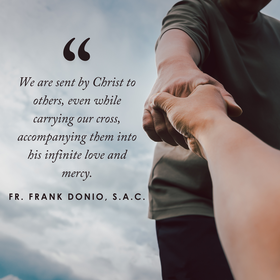 Taking up our cross and following Christ is not only for the Lenten season. It is the everyday life of a missionary disciple of Christ. We follow Christ and are sent by him into the world. The weight of our cross may be burdensome, but we are not alone. We are together with the community of faith, other followers of Christ who accompany us in prayerful solidarity. This is missionary discipleship. This is apostleship. We are sent by Christ to others, even while carrying our cross, accompanying them into his infinite love and mercy. Over the last weekend, members of the Catholic Apostolate Center team focused on missionary discipleship and accompaniment during presentations at the Archdiocese of Los Angeles Religious Education Congress. It is one of the largest Catholic gatherings in the United States with around 20,000 attendees of various ages and cultures, deeply committed to their Catholic faith and desiring to witness Christ in their lives. While there, we met collaborators and friends of the Center, and came to know new ones. It was a beautiful and uplifting experience. As you continue on your Lenten journey, may it be one of taking up your cross, following Christ, and going forth on mission for him! May the Charity of Christ urge us on! In God, the Infinite Love, Fr. Frank “Peter and his companions had been overcome by sleep, but becoming fully awake, they saw his glory and the two men standing with him.” -Luke 9:32 Twice in the Gospels we hear of the trio of disciples sleeping at pivotal moments in Christ’s life and ministry: at the Transfiguration – in this Sunday’s Gospel – and in the Garden of Gethsemane during Christ’s Agony. Both times, Christ is in deep prayer. And both times, Peter, James, and John are “overcome by sleep.” I get it. The group of men have just hiked up a mountain. It would have been normal to rest after such a grueling endeavor. Similarly, in the Garden, Jesus took the three disciples to pray after the Feast of the Passover—a long, filling meal complete with wine. I think of all the times I’ve napped after a holiday meal and sympathize with Peter, James, and John. In these scenes, they are so human. They become tired and rest their eyes. And yet, because of their physical tiredness, they miss out on God’s glory. In this week’s Gospel for the Second Sunday of Lent, Jesus is transfigured and his three beloved disciples are offered a glimpse of the glory to come—not only the glory of the Resurrected Christ, but the glory that awaits all men and women who allow themselves to be transformed by his grace. This Lent, I find myself asking, “Am I asleep with his disciples? What’s causing me to shut my eyes to God’s glory?” These questions are what have guided my Lenten journey as I discern how to grow in holiness this season. Each year, the Church in her wisdom asks us to reflect on what is making us spiritually sluggish and helps us prepare for Easter through prayer, fasting, and almsgiving. By ramping up in these three Lenten tenets, we can grow in our ability to see God’s will and the Holy Spirit at work in our lives. Had the Apostles been awake throughout the entirety of Christ’s Transfiguration, they would have basked longer in this glory—fear and confusion would not have gripped them. Lent calls us to wake up, to be alert, not only for the Easter celebration, but for God’s invitation to greater holiness throughout our lives. Pope Francis highlights Lent as the continuation of the “journey of conversion.” This journey is a lifelong one. And yet, seasons such as Lent, which focus on an even greater attention to prayer, fasting, and almsgiving, often spur us deeper and further on this journey towards Christ. As Pope Francis encouraged in his 2019 Lenten message: Let us not allow this season of grace to pass in vain! Let us ask God to help us set out on a path of true conversion. Let us leave behind our selfishness and self-absorption, and turn to Jesus’ Pasch. Let us stand beside our brothers and sisters in need, sharing our spiritual and material goods with them. In this way, by concretely welcoming Christ’s victory over sin and death into our lives, we will also radiate its transforming power to all of creation. The goal of Lent is not only Easter, but Christ Himself. This Lent, may our participation in prayer, fasting, and almsgiving help us shake off the drowsiness that shuts our eyes to God’s glory. For more resources to accompany you throughout your Lenten journey, please click here. Questions for Reflection: Am you asleep with Christ's disciples? What’s causing you to shut your eyes to God’s glory?” **This blog was originally published on March 12, 2019.** “Jesus, let there be more of you and less of me.” This is the short prayer I was once encouraged to pray as a penance by a wise, older priest. As we find ourselves at the start of Lent, these words once again come to mind, and I would like to offer them for your contemplation. The Church offers the season of Lent as an opportunity to prepare Her children well for Christ’s resurrection–both at the celebration of Easter (March 31 this year) and at His Second Coming. These preparations take the form of prayer, fasting, and almsgiving; the spiritual, penitential, and charitable practices we take up and the worldly things we put down. For forty days we walk into the desert, just as Jesus did, to humbly open ourselves to temptations and more fully offer our lives to the Lord. So what does that prayer–letting there be more of Jesus and less of me–have to do with Lent? Well…everything. In the first reading at Mass on Ash Wednesday, the prophet Joel extols us: “Rend your hearts, not your garments, and return to the LORD, your God” with your whole hearts (Joel 2:12). The Lord does not want to see what we can do of our own strength or will during this season; He wants us to see what He can do through us and the transformation He can work within us. Lent certainly calls for a degree of testing the limits of our comfort zones. More than this, it is an invitation to leave behind our will and consider the offerings and changes that will help us become more like Christ. As you reflect on your Lenten practices, consider asking yourself: “What can I offer to Jesus? How can I make more room for Him in my life? What can I let go of that will help me on this journey?” Approaching Lent in this way necessitates an act of surrender. It requires us to focus less on the material outcomes and more on the spiritual. This might mean to not give up ice cream like you do every Lent and instead, or additionally, prayerfully consider what areas of your life you have been keeping the Lord out of. St. John Henry Newman speaks to this in a sermon for the First Sunday of Lent: “...fasting is only one branch of a large and momentous duty, the subdual of ourselves to Christ. We must surrender to Him all we have, all we are. We must keep nothing back.” This, admittedly, is a challenging invitation, but remember that we are not doing Lent on our own. We are doing it with Jesus. This act of surrender necessitates reliance. And this reliance requires humility; an admission of our own weakness and powerlessness compared to Christ’s great strength. When you want to snooze your alarm and eschew the morning prayer time you’ve committed to, offer that to the Lord. When you are tempted to join in the office gossip, ask for Jesus’ strength. Ordinary as these offerings may be, that does not mean they are easy. If we have chosen to subdue ourselves for Christ’s sake, we can trust that He will provide the grace and strength we lack. As Catherine Doherty writes in Season of Mercy, “Mortification and penance are a passionate response of a man to a Passionate Lover who is God.” In humbly striving to more fully do the will of the Father, we naturally make more room for Jesus. As you surrender yourself to Him this Lent, also rely on Him. He wants us, and the attachments that bind us, to shrink away only so that His mercy and love can reign more completely. “Jesus, let there be more of you and less of me.” 2/8/2024 St. Anthony of Egypt and the Importance of Our Witness to Faith in a Secular WorldRead Now"The devil is afraid of us when we pray and make sacrifices. He is also afraid when we are humble and good. He is especially afraid when we love Jesus very much. He runs away when we make the Sign of the Cross." -St. Anthony of Egypt When St. Anthony of Egypt first ventured into the desert to become a hermit and devote his life entirely to God, he did not think that he would start the first monastic community–a tradition that would grow to be one of the life veins of the Church to this day. But St. Anthony inspired hundreds of men to follow him into the desert, living a life of simplicity and complete dependence on God. While at first this might seem ironic, that a man desiring to live alone would instead have hundreds of men following him and desiring to live in community with him, this story is seen time and time again throughout the lives of the saints. St. Anthony, St. Francis, St. Dominic, St. Clare, St. Teresa: each of these saints moved in a way that was completely contrary to the world when God called them to do so, and through their action inspired thousands of Christians to follow them and live lives of radical faith. We can often fall into the belief that our lives as ‘normal’ Catholics are not going to have an impact on the lives of others in any significant way, but as we see through the life of St. Anthony, every decision we make impacts and influences those around us. The men who followed St. Anthony into the desert did not do so because he was incredibly charismatic, or publicly performing great miracles, or telling them to follow him or they would go to hell. They followed because they saw that St. Anthony was joyfully living his life in a radically different way and they wanted to know what could possibly be going on so that their lives could be fulfilled like St. Anthony’s was. When we have a moment of conversion and the Lord calls us to be living saints, we are called in some way to radically change how we live our lives, no matter how big or small that change is. When we step into the change and choose to follow the Lord, we begin living as missionary disciples, our way of life witnessing to the reality which we live for. In the example of these saints, we see just how important it is that we live out these changes in a public way–that we live our lives in a way in which people can meet us and know that we are followers of Christ. Despite how small or big we may be in the mystical body, our unique charism matters and was created to help bring others into the fullness of the Christian life. When we look at the way we live our lives, what stands out as being unique to life as a missionary disciple? When we interact with a cashier at a store, do they experience an encounter with the Living God and the joy that comes with knowing Him? Are we willing to publicly live out our faith as an invitation for others to come and follow Christ, to have conversations with people about Jesus and invite them into the hope that we know? Do we stand for our morals and beliefs or do we allow others to conform our beliefs to this world? These are hard questions to ask ourselves, but we must take the time in prayer to reflect on whether the way we live brings others to follow the Christian faith, because others will follow our example. Thankfully as we see in the quote by St. Anthony at the beginning, the life of a Christian living for heaven doesn't have to be complicated, but is rather one of simple love for God and neighbor lived out through prayer, sacrifice, and faithfulness. Let us take the example of St. Anthony and live our lives in a simple, faithful way that shows those who encounter us that we are living for Christ, and that if they follow Christ they will find the same hope, peace, joy, and love that we witness to in the ways we live out our faith everyday. **This image is from: https://en.wikipedia.org/wiki/Saint_Anthony_Abbot_Tempted_by_a_Heap_of_Gold**
Receptivity to others is an important part of the work of evangelization. When we think about those in faith who we can look to for guidance in receptivity, we often go to Mary, and rightly so. While Our Blessed Mother is the perfect model of receptivity through her being the one who received the Incarnation, it is in examining the life of an unlikely 19th century saint that we see how we can live out Mary’s model of receptivity in a modern, secular world in order to bring others to encounter with Christ. St. John Bosco was an Italian priest who lived in the 19th century, and is known for the work he did with troubled youth in the city of Turin where he was assigned as a parish priest. During his time, it was often frowned upon for priests to educate, accompany, house, and provide for the poor youth in the ways that St. John Bosco did, but this did not stop him from his work. Through his lifetime St. John Bosco helped so many young boys in difficult situations to encounter Christ and become faithful Christians that other priests in Turin accused him of bribing the boys and “stealing” them from the other parishes. But it was not St. John Bosco’s money or ulterior motives that brought these boys to the Church, it was his ability to receive and love them fully where they were. When he met boys living on the streets, he did not immediately try to get them into the church for Mass, but rather grew to know and love them as children of the Father, becoming a trusted friend who could share the love of Jesus Christ with them. When he visited the boys in prison, he did not condemn or accuse them, but would listen lovingly to whatever they had to say, simply being with them so that they would not feel forgotten or unloved. St. John Bosco understood that the point of his evangelization was not to get as many people in pews as possible, but to bring as many people as possible to know their Savior– and to do that, a person must first know that they have an identity, a community, and a purpose. When St. John Bosco received the boys he ministered to at whatever level of faith or morality they were at, he let them know, often without words, that they had the identity of being sons of the Father, had community in Holy Mother Church, and had a purpose of getting to eternal life in the Holy Trinity. We learn from St. John Bosco how crucial of a step receiving the other is when evangelizing. It can be tempting to jump straight into a script or already be thinking about ways to invite the person you’re encountering into the faith before you’ve even started talking to them. However, the example of St. John Bosco challenges us to instead receive the person first: to listen to them, get to know them, and love them fully where they are. It is only from this place of trust in receptivity, that we can truly say to the other: “I love you, but there’s someone who loves you infinitely more, and I want to introduce you to Him.” **This photo is from https://catholiclife.diolc.org/2019/07/25/st-john-bosco-a-role-model-of-accompaniment/**
Today we celebrate the heavenly birthday of one of my dearest friends, St. Francis de Sales. It is often said that the saints choose you, and I have certainly found that to be the case with Francis. Since I first “met” him while reading a book about the saints, he has continued to captivate and encourage me.
Francis was born in France in 1567 to an aristocratic family. He was well educated, and while his father hoped this would lead Francis to a career in law, his studies ended up leading him to the priesthood. He was a sought-after spiritual director (perhaps his most well-known directee was St. Jane Frances de Chantal with whom he started the Visitation Sisters). Francis was also devoted to evangelization and catechesis through preaching and writing, and had a love of the poor which was manifested through works of charity and his own detachment from material things. He was canonized a saint in 1665 and named a Doctor of the Church in 1877. One of the things that makes a saint is that their life and teaching transcend time and remain relevant over the centuries. This is certainly true of St. Francis de Sales. While Vatican II affirmed the universal call to holiness in the 1960s, Francis ardently promoted this teaching three centuries prior. When St. Jane Frances de Chantal wanted to leave her duties as a mother for the “higher” calling of entering religious life, Francis encouraged her to have patience and fully embrace her current vocation as a mother. Rather than imagining that holiness is better achieved in religious life, he reminded her that faithfulness to the real life unfolding before her was the place for her to become holy. As he said to another directee in An Introduction to the Devout Life, “work in quiet cooperation with him, and then rest satisfied that if you have trusted entirely to him you will always obtain such a measure of success as is most profitable for you, whether it seems so or not to your own individual judgment.” When Francis was named a Doctor of the Church, it was under the title Doctor of Divine Love. Francis’ personal devotion to the Lord and life of ministry flowed from his own love for God and awareness of God’s love. When Francis’ devoted friend, Bishop Jean-Pierre Camus, questioned him about how to grow in love of God and neighbor, Francis replied simply, “You learn to speak by speaking, to study by studying, to run by running, to work by working. Just so you learn to love God and many by loving. If you really want to love God, go on and love Him more and more.” This simple approach to God is a hallmark of Francis’ spirituality. Without pretending that such growth in holiness would be quick or easy, he offered straightforward guidance that people in any vocation or stage of life could follow. While we may not be able to love God perfectly and completely today, we can certainly strive for that and lay our foundation today. Francis shows us that God’s love toward us and our love toward God are reciprocal, growing in relation to one another. One of my favorite quotes from St. Francis de Sales is, “Have patience with all things, but chiefly have patience with yourself.” Francis offers the guidance of a gentle, compassionate father. He knew firsthand the temptation towards despair at our lowliness before God, but he also knew personally that God offers us the grace we need in our pilgrimage towards Him. God knows each of us intimately–our strengths and our struggles–and looks into our hearts. Rather than being overwhelmed by our shortcomings, spiritual and otherwise, Francis encourages us to extend God’s own gentleness and patience to ourselves. As Francis says elsewhere, God “delights to show forth his power in our weakness, his mercy in our misery.” St. Francis de Sales, Doctor of Divine Love, pray for us! Further reading: Pope Francis. (2022). Totum Amoris Est: On the fourth centenary of the death of Saint Francis de Sales. Campbell, Colleen Carroll. (2020). The Heart of Perfection: How the Saints Taught Me to Trade My Dream of Perfect for God's. Howard Books. **This image is from https://www.catholic.org/saints/saint.php?saint_id=51** “Seek God and you will find God. Seek God in all things and you will find God in all things. Seek God always and you will find God always.” – St. Vincent Pallotti
God, the Infinite Love, is seeking us. We are not simply seeking God. God is seeking us. Our eyes, ears, minds, and hearts need to be attuned to see, hear, know, and feel the presence of God. St. Vincent Pallotti, whose feast day is today, understood well in his own life how to attune himself in this way. He knew that we do not do this on our own. The grace of God which we cooperate with gives us that ability. It is God seeking us! Look for God, listen for God, choose to open your mind and heart to God in all moments and in all places. St. Vincent Pallotti assisted all in seeking God and knew that they could not only seek, but find God. He believed that in our seeking and finding, Christ transforms our lives to live more fully for him. Christ sends us to others as his apostles, being the loving and compassionate face of God to those we encounter. Pallotti was this face, aligning his life with the poor, in whatever way that poverty was, physical or spiritual. He revived faith and rekindled charity and wanted other people of faith to do the same. Pallotti knew that he and we are not living our own mission, we are living the mission that Christ has given us. Ours is the mission to bring all to Christ in and through his Church. May the Charity of Christ urge us on! St. Vincent Pallotti, pray for us! In God, the Infinite Love, Fr. Frank "Commitment to ecumenism responds to the prayer of the Lord Jesus that 'they may all be one' (Jn 17:21). The credibility of the Christian message would be much greater if Christians could overcome their divisions and the Church could realize 'the fullness of catholicity proper to her in those of her children who, though joined to her by baptism, are yet separated from full communion with her.' We must never forget that we are pilgrims journeying alongside one another. This means that we must have sincere trust in our fellow pilgrims, putting aside all suspicion or mistrust, and turn our gaze to what we are all seeking: the radiant peace of God’s face” (Evangelii Gaudium, n. 244). Over the nine years that I was at St. Jude Shrine in Baltimore, Maryland, I had the opportunity to participate in and then to host an annual prayer service for Christian Unity. It became a very popular celebration and leaders from various Christian communities participated, including the Archbishop of Baltimore. To me, though, the most important people who participated were the people who went week to week to their faith communities in various parts of Baltimore, but never had the opportunity to pray together with Christians from other communities. Prayer is powerful and to underestimate its power to unite us leaves us lacking in the virtue of hope. Such hope is not naïve, but is based on firm trust in the work of the Holy Spirit. The annual Week of Prayer for Christian Unity will begin on Saturday, January 18th and conclude on the Feast of the Conversion of St. Paul on January 25th. Year after year, Christians are invited to pray that “they may be one.” St. Vincent Pallotti, patron of the Catholic Apostolate Center and founder of the Union of Catholic Apostolate, worked diligently for unity in the Church, using the liturgical Octave of the Epiphany in Rome as a means to unite in prayer members of the Eastern and Western traditions of the Catholic community who were rather disconnected from one another. This celebration was held in the city of Rome from 1836 until 1968. His feast day, on January 22nd, is in the middle of the Week of Prayer for Christian Unity. Collaboration of all Christians can lead us toward Pallotti’s vision, hope, and prayer that one day we may be “one fold, under one Shepherd, Jesus Christ” (Cf., Jn 10:16) Since our mission as the Catholic Apostolate Center is derived from the charism of St. Vincent Pallotti, who fervently prayed for such a day, we invite you to pray not only individually, but draw other Christians together in prayer. Prayer, though, is not the only thing that we can do. We can learn more about what the Roman Catholic Church teaches about the needed work for building unity among Christians. We invite you to explore the many resources that we have on our new Christian Unity page. May we also take up the call of the Catholic Church spanning from the time of the Second Vatican Council to the appeal of Pope Francis today: "The search for unity among Christians is an urgent task... We are well aware that unity is primarily a gift from God for which we must pray without ceasing, but we all have the task of preparing the conditions, cultivating the ground of our hearts, so that this great grace may be received" (Address to the Delegation of the Ecumenical Patriarchate of Constantinople, June 28, 2013). Please visit our Christian Unity resources by clicking here. **This blog was originally published on January 19, 2021.** “Jesus allows himself to be found by those who seek him, but to find him we need to get up and go.” -Pope Francis I remember getting up in the middle of the night years ago to try and glimpse a rare, hybrid, solar eclipse. My husband and I camped out at the Lincoln Memorial in the wee hours of the night with blankets and hot chocolate to wait for a rising sun that would be covered by the moon. Rich pink and orange hues danced across the sky, basking the surrounding monuments. Though there were clouds that day, we knew something mysterious and magical was happening above us. We were willing to sacrifice some sleep and wait in the cold just to catch a glimpse of that star. What did the magi see when they looked up in the sky over two thousand years ago? It was enough not only to make them camp out in wonder, but to set out in haste. Their journey required provisions, logistics, time, and great effort. But something in the sky beckoned them. I imagine it was similar to what Peter, Andrew, James and John saw in the face of Christ calling them on the beach – something so extraordinary and captivating that it called them out of their day-to-day routines to begin a new journey. Both the journey of the magi and that of the first apostles had the same end: Jesus Christ. These journeys show that an encounter with Jesus is life-changing. It sets us in motion: the journey of the magi, the life of discipleship and evangelization. This past Sunday, the Christmas season continued with the celebration of the Feast of the Epiphany. The Gospel reading recounted the journey and visitation of the magi to the Christ-child. As the Catechism of the Catholic Church states, “The Epiphany is the manifestation of Jesus as Messiah of Israel, Son of God and Savior of the world. the great feast of Epiphany celebrates the adoration of Jesus by the wise men (magi) from the East, together with his baptism in the Jordan and the wedding feast at Cana in Galilee.” The birth of Christ is the first outward manifestation of the Messiah. Jesus, whose name means “God saves,” is the revelation of God’s plan of redemption. After years of prophecy and expectation, longing and promise, God comes in the midst of his people in the most intimate way possible: as one of them. This Incarnation is awe-inspiring. So awe-inspiring, in fact, that it even draws strangers. The Messiah foretold was long-awaited by the Chosen People of God—the Israelites. And yet, how many do we see at the birth of our Lord? The Visitation of the Magi foretells the inclusion of the entire world in God’s plan of salvation. He has come not only to redeem Jews, but Gentiles—peoples of every land and nation. As Paul wrote in Sunday’s second reading, “the Gentiles are coheirs, members of the same body, and copartners in the promise in Christ Jesus through the gospel.” What can we learn from the magi? In his homily on the Feast of the Epiphany last year, Pope Francis boiled it down to 3 things:
Let us imitate the magi in our lives of discipleship. They were not complacent, but so observant that they were able to recognize God’s sign: the star. “The Magi were not content with just getting by, with keeping afloat,” Pope Francis said last year. “They understood that to truly live, we need a lofty goal and we need to keep looking up.” They were vigilant, ready to go when the time came. And their hearts were receptive, disposed to the signs of the times. From there, they set out on a journey which would lead them to Christ himself. This journey required effort, planning, and sacrifice. And finally, they came bearing costly gifts: gold, frankincense, and myrrh. They met the generosity of God by reciprocating generosity. Pope Francis continued, “To give freely, for the Lord’s sake, without expecting anything in return: this is the sure sign that we have found Jesus.” As we reflect on the significance of the Feast of the Epiphany, let us look to the example of the magi in our lives of discipleship. Let us look up beyond the distractions of the world in order to see God’s star. Let us take the risk of setting out on our journey closer to Christ with joy. And let us give generously to a world which needs the generous love and mercy of the Christ-child. Question for Reflection: What are some things in our life that might distract us from seeing God in the everyday? **This blog was originally published on January 8, 2019** **This photo is from: https://www.crossroadsinitiative.com/media/articles/epiphany-of-the-heart/** “When Jesus touches a young person’s heart, he or she becomes capable of truly great things.” – Pope Francis The quote above from Pope Francis’s introductory remarks to the pilgrims of World Youth Day 2016 in Krakow, Poland, spoke to over 2 million young adults traveling around the globe to worship together. Pope Francis’ words were heard by people already impacted by the message of Christ, many of whom, I would guess were informed of and formed by the love of God thanks to their Catholic educations. Today we celebrate in the United States the feast of St. John Neumann, Bishop of Philadelphia and founder of the first diocesan school system in the United States. Per the request of many families in his diocese, Bishop Neumann established a diocesan school system so that the children of the diocese could receive Catholic instruction and grow in their faith in a classroom setting. When the school system was established, the diocese of Philadelphia was strapped for resources, so Bishop Neumann invited many different religious communities to the fledgling schools to tend to the rapidly growing immigrant population in the city. His efforts both established the school system and increased the education of the city’s Catholic youth by more than twenty-fold. His diocesan system later served as the model for parochial Catholic education for much of the United States. St. John Neumann understood in the 19th Century - much like Pope Francis does now - that learning about the love of Christ through educational experiences can be an important part of our evangelical mission in this world. If we are all called to share in the evangelizing mission of the Gospel, then we must consider in what ways those gifts and talents can be utilized for that mission. For St. John Neumann, Catholic education provided the youth a designated place to come and learn about the Lord and how to live as a Catholic alongside of their other studies. For many youth, their formal catechesis ends with sacramental preparation. Families often don’t understand the importance of continual catechesis throughout a person’s life. So, what can we do to help the youth and young adults in our parishes and communities become more engaged in the faith outside of Catholic schools? How can we support education in non-traditional ways? The answer is particular to your individual situation and universal to the faith we all believe in. Pope Francis has some advice and good examples of experiences that I cannot better summarize myself: “Knowing your enthusiasm for mission, I repeat: mercy always has a youthful face! Because a merciful heart is motivated to move beyond its comfort zone. A merciful heart can go out and meet others; it is ready to embrace everyone. A merciful heart can be a place of refuge for those who are without a home or have lost their home; it can build a home and a family for those forced to emigrate; it knows the meaning of tenderness and compassion. A merciful heart can share its bread with the hungry and welcome refugees and migrants. To say the word ‘mercy’ along with you is to speak of opportunity, future, commitment, trust, openness, hospitality, compassion, and dreams.” Is your parish environment one of mercy? Does it foster openness and compassion? Is it willing to embrace people where they are with mercy and hospitality? Is your parish one that is moving outside of its parish borders and going to where it’s a bit uncomfortable and meeting people where they are both physically and spiritually? This is part of the continuing education that we as Catholics must undertake if we are to carry the mission of God to the world. We must constantly learn and relearn the message of Christ as espoused in the Gospels and find ways to practice it in our daily lives. We must learn to love and serve God and to love and serve our neighbor, not just from behind a desk, but in every step we take. **This blog was originally published on January 5, 2017.**
Christmas marks the coming of the Christ Child into our world. Gabriel told Mary that the baby she would bear shall be named Emmanuel, meaning “God is with us.” He is faithful and always encounters us where we are. One of the ways the Church communicates this is by turning pagan festivals into Christian ones. The calendar used during the life of Christ was the Julian calendar. According to that, December 25 was the day the winter solstice was celebrated as light began to show more and more after the darkest and longest days. The pagan festival of Juul (Yule) would be celebrated by lighting fires to “symbolize the heat and light of the returning Sun.” In the Church, we not only celebrate the nearness of the sun in the days to come (winter in the Midwest can indeed be long and dreary), but also the nearness of the Son of God who came to embrace those in the darkness. As a baby, God allowed Himself to be embrace-able by us and ultimately sacrifice-able. This intimate vulnerability is exactly what would save us. Indeed, tidings of great joy! If you attend Mass on Christmas Night, you will hear “The people who walked in darkness have seen a great light; upon those who dwelt in the land of gloom a light has shone” (Isaiah 9:1). The world around us can feel dark and desolate, but on Christmas Eve we hear “No more shall people call you ‘Forsaken,’ or your land ‘Desolate,’ but you shall be called ‘My Delight,’ and your land ‘Espoused.’ For the LORD delights in you” (Isaiah 62). How does it feel to hear these words during this Christmas season? We don’t have to search too hard for news that is discouraging. We are facing battles of many kinds and sometimes we feel stuck in the trenches with only a sliver of hope for a ceasefire, let alone a victory. The Good News of the Gospel of St. John proclaims, “the light shines in the darkness, and the darkness has not overcome it” (John 1). Even when we feel defeated, we can wholeheartedly know that we will be victorious when we welcome Jesus into our hearts. Will our hearts be like a crowded inn concerned more with the demands of the world and not aware of who is standing at the door? Or, will our hearts be a humble stable bustling with life and ready for any opportunity to welcome our neighbor? No matter the darkness you feel, see, or experience in life right now, Jesus was born of Mary so that He would feel, see, and experience it all in flesh and bone with you! The Evil One tries to lead us into despair, but we know that Jesus was born to die for us to defeat sin once and for all. Evil can only exist in the dark. When it’s brought into the light, it is exposed and defeated by the Light of the World, the Logos, the Alpha and the Omega, the King of Kings. As you turn on your Christmas lights, light a candle, or make a fire in your fireplace throughout this Christmas Season, remember that Jesus is the true gift that shines light into your life. At my undergraduate commencement ceremony, our speaker quoted the lyrics of a Leonard Cohen song. These words continue to bring me hope when I feel discouraged or broken. “Ring those cracked bells that still can ring. Forget your perfect offering. There is a crack, a crack in everything. That’s how the light gets in.” Imagine the light from the Star of Bethlehem streaming through the cracked walls of the stable on that first Christmas. Let’s be on the lookout for the Light of Christ shining through the cracks in our hearts so we can reflect that light for others. Merry Christmas! **This photo is from: http://www.intothedeepblog.net/2016/01/bethlehem.html**
Advent, the word in and of itself instills hope and builds anticipation for greatness, joy and peace. What is it are we waiting for? It seems with the close of the year, we wait anxiously for those intimate times with our family and friends, a break from work and the routine and a time for closeness. Maybe, we are waiting for a Christmas party, presents and the holiday ambience. As a student, I always find it paradoxical that finals would be during the season of Advent. The hectic study and preparation of exams easily muddles the preparation I could be doing in my own heart for the King. The anticipation, the excess and busyness I find myself in reminds me of the Gospel story where the disciples forget the presence of the Lord in their midst: “And behold, there arose a great storm on the sea, so that the boat was being swamped by the waves; but [Jesus] was asleep. And they went and woke him, saying, ‘Save us Lord; we are perishing.’ And he said to them, ‘Why are you afraid, O men of little faith?’ Then he rose and rebuked the winds and the sea; and there was a great calm” (Matthew 8:23-26). Looking without eyes of faith, the disciples found themselves in a panic and disarray. With a focus on the storm and on the circumstance that assailed them, the disciples forgot the most essential truth that was right there with them on the boat: the Sleeping Christ. The answer to their cries for help was peacefully present in their situation ready to grace them with a great calm. What is it, again, that we are waiting for during this Advent Season? The gift we are waiting for is the sleeping babe, the sleeping Christ, in the manger. The Divine Son, who humbles Himself so greatly that He arrives in the stillness of night, in the quiet with shepherds and sheep alike. The Creator God comes in the stillness. What we are waiting for is the Prince of Peace. My own hurriedness in finishing all of my papers and exams, finding the perfect gifts for my friends and family, making travel plans and somehow finding time to stop and recognize where I am headed resembles the experience of the disciples. I am awaiting His peace, but my actions reveal otherwise. I must intentionally make the effort to stop and breathe in what I am truly searching for this December. May the anticipation throughout this Advent season bring us to stop and ponder the mystery of the Lord of the Universe resting in a manger who has come to encounter our hearts. May the peace of the Sleeping Christ invade our hearts, our minds, and our actions so we too may accept the true gift He wishes for us all this season: a great calm (Matthew 8:26). **This blog was originally published on December 12, 2015.** **This photo is from: https://thejesusquestion.org/2011/12/25/nativity-paintings-from-around-the-world/** 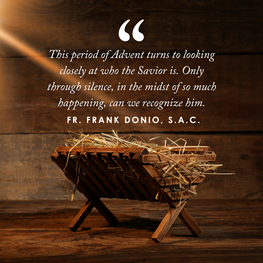 On the cusp of Christmas, our lives can be so full of doing this and that. It is usually not a time of silence and contemplation. And yet, the most famous Christmas hymn is Silent Night. It is worth considering that night that we will remember in only a few short days. This period of Advent turns to looking closely at who the Savior is. Only through silence, in the midst of so much happening, can we recognize him. Pope Francis offers us these considerations: “We can ask ourselves: What place does silence have in my days? Is it an empty, perhaps oppressive, silence? Or is it a space for listening, for prayer, for guarding my heart? Is my life sober or filled with superfluous things? Even if it means going against the tide, let us value silence, sobriety and listening. May Mary, Virgin of silence, help us to love the desert, to become credible voices who testify to her Son who is coming” (Angelus, December 10, 2023). The questions asked by Pope Francis are good ones to meditate on in these last days of Advent. Entering into listening and prayer, we can hear God’s voice more clearly. The voice of the One who comes into the world as Prince of Peace and sends us forth to testify to the world our faith in him. May the Charity of Christ urge us on! The Catholic Apostolate Center team is keeping you in special prayer during the Advent and Christmas seasons. May you have a blessed Christmas and a faith-filled New Year! In God, the Infinite Love, Fr. Frank |
Details
Archives
July 2024
Categories
All
|
About |
Media |
© COPYRIGHT 2024 | ALL RIGHTS RESERVED

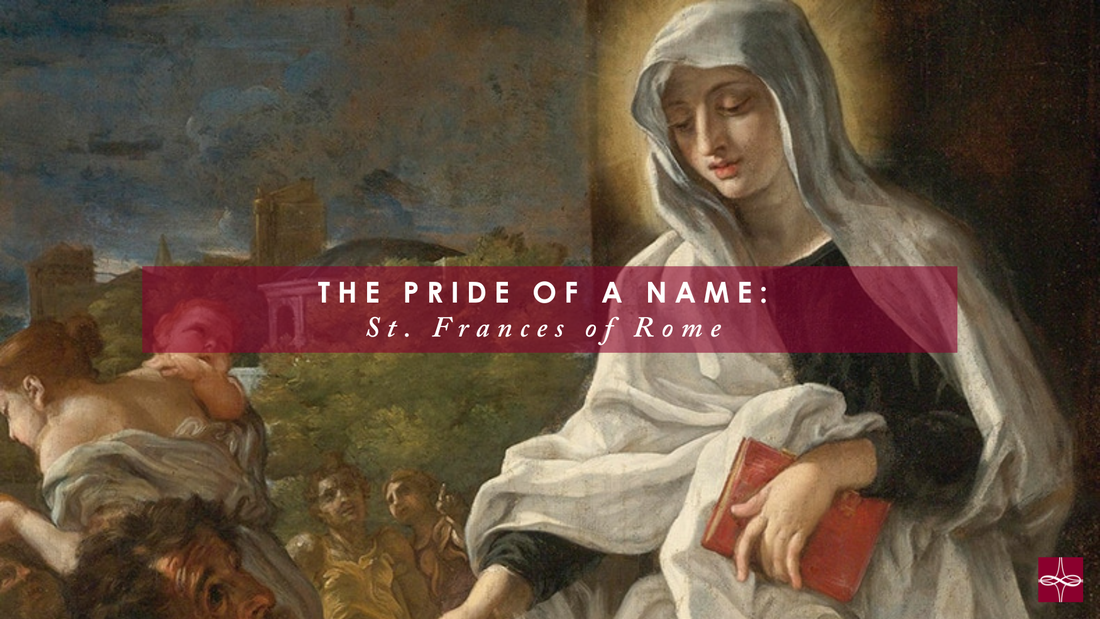


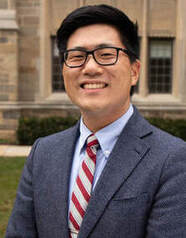
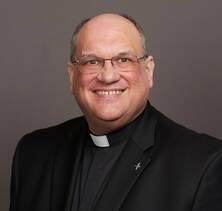
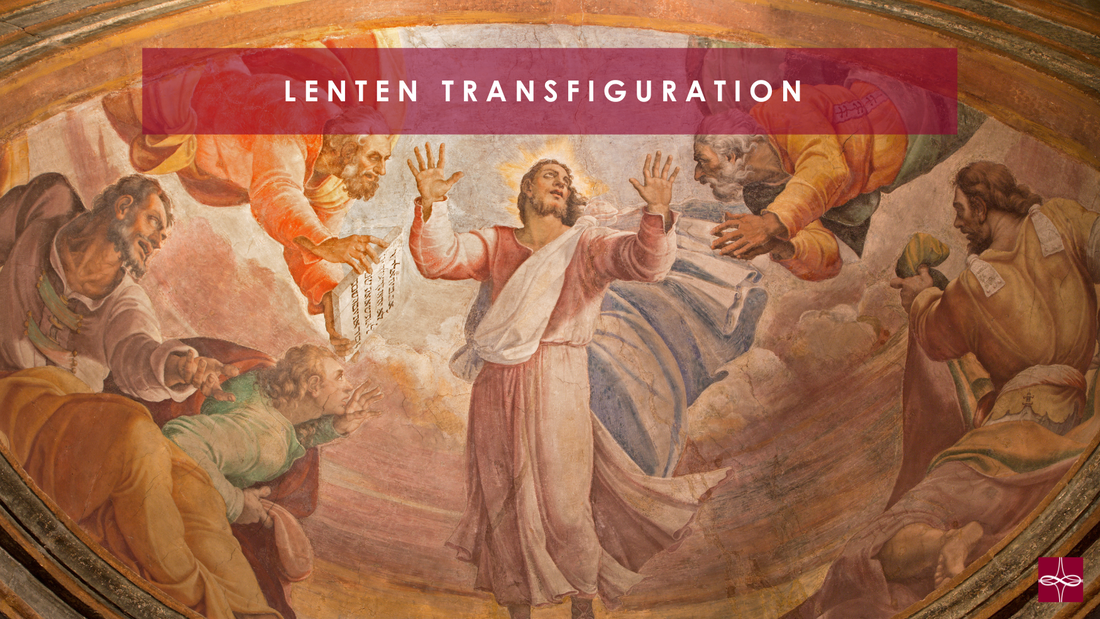

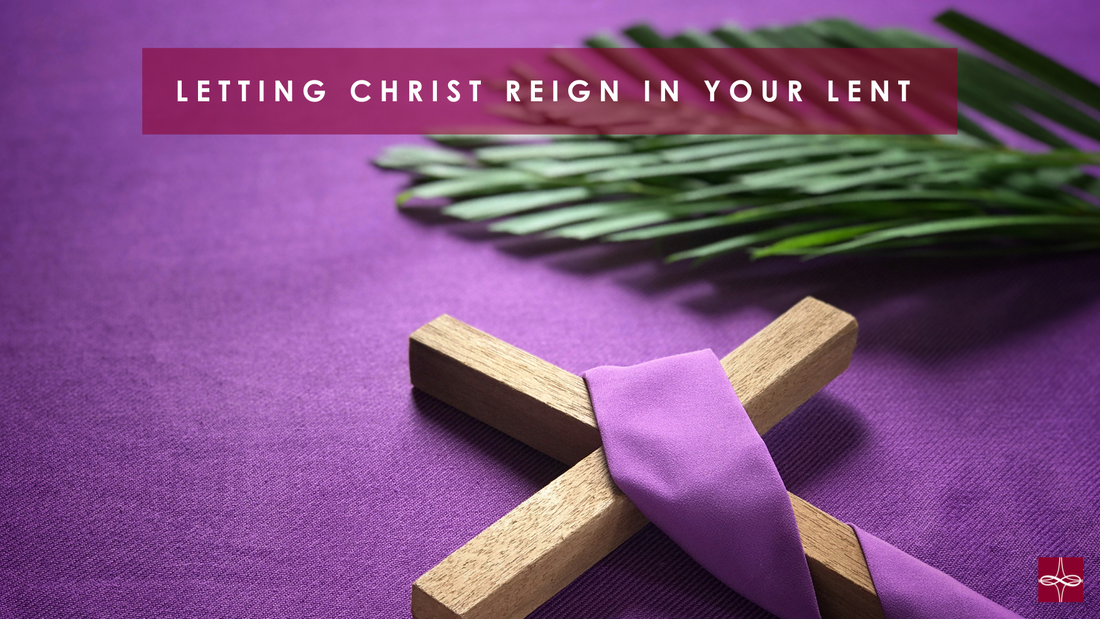

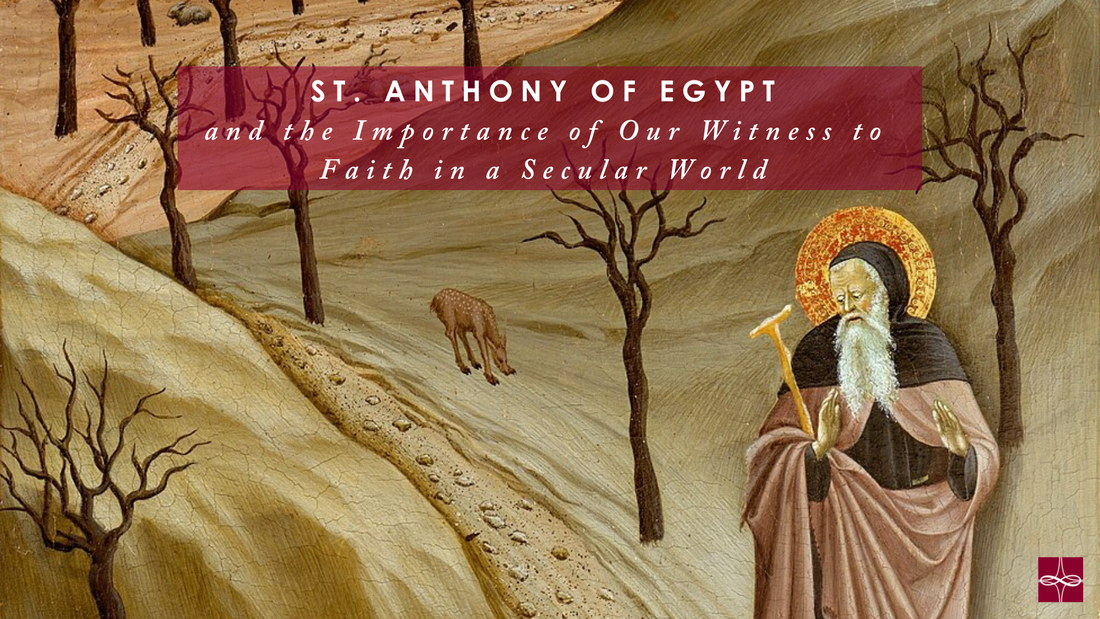

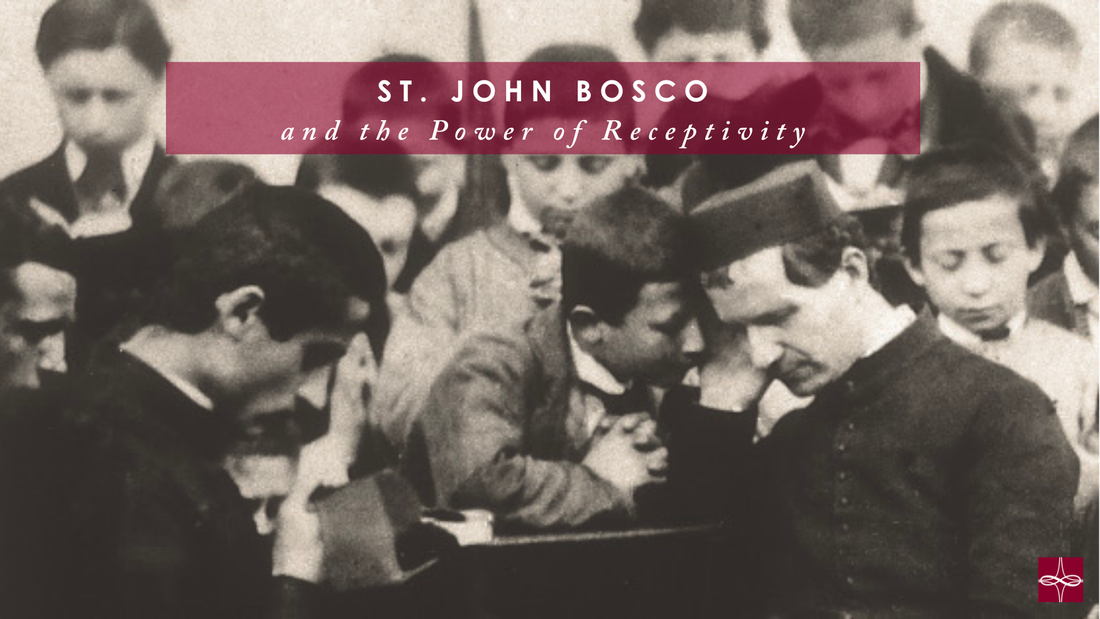
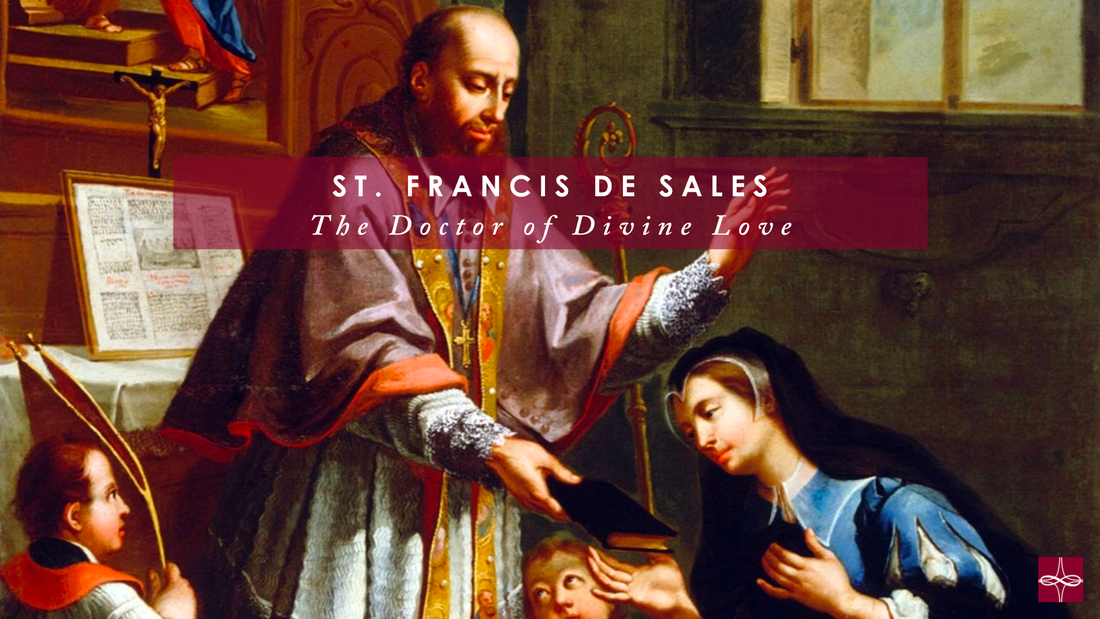
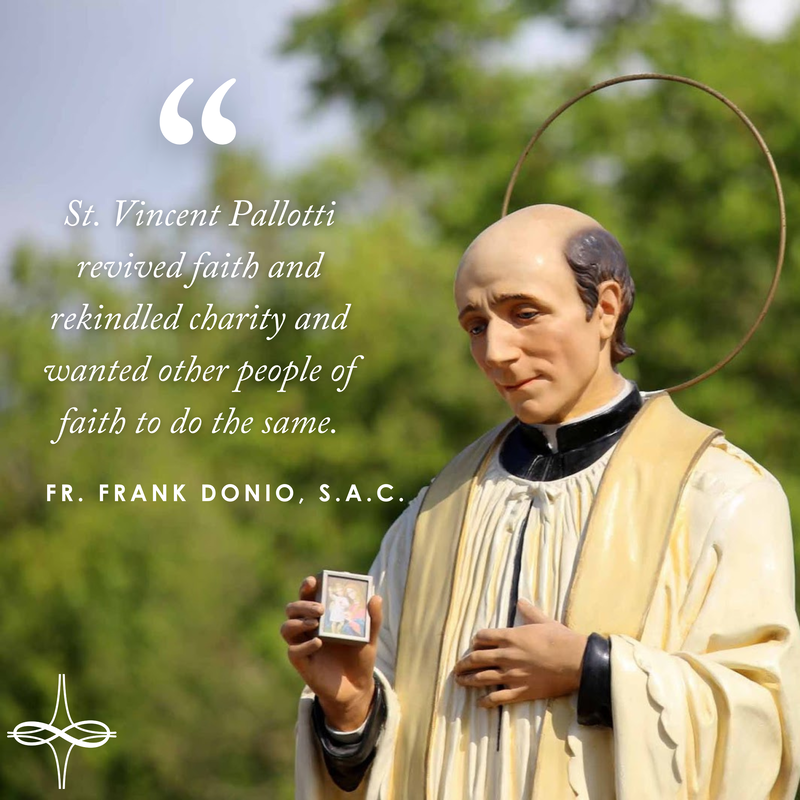
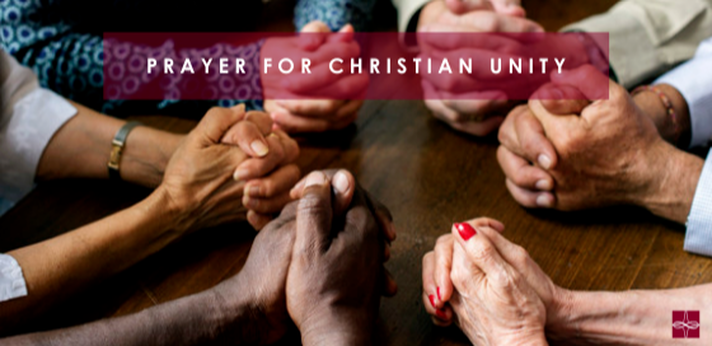
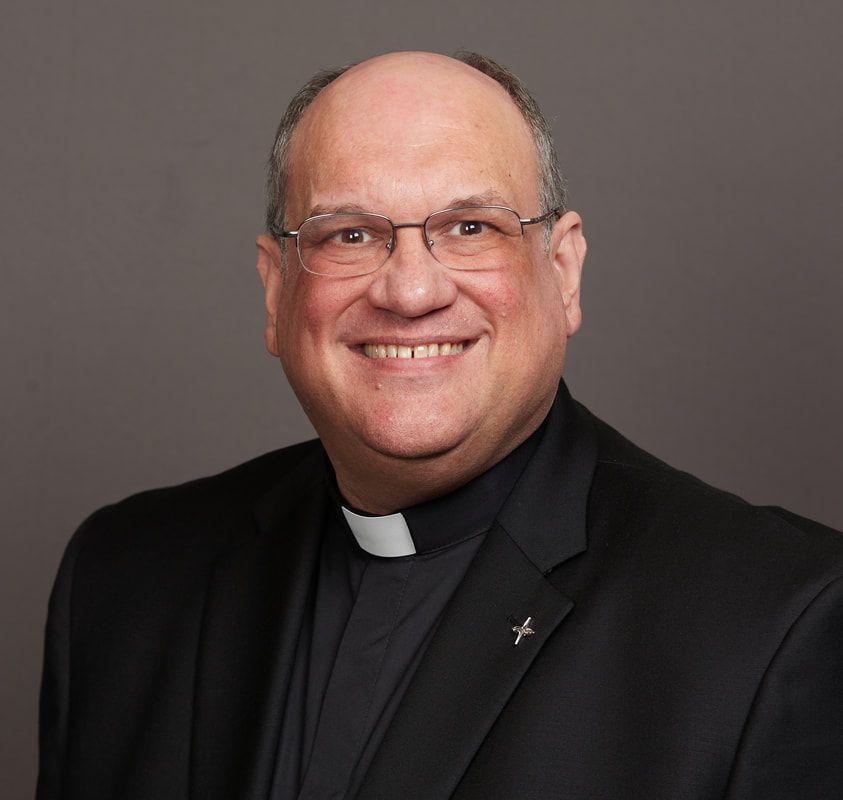
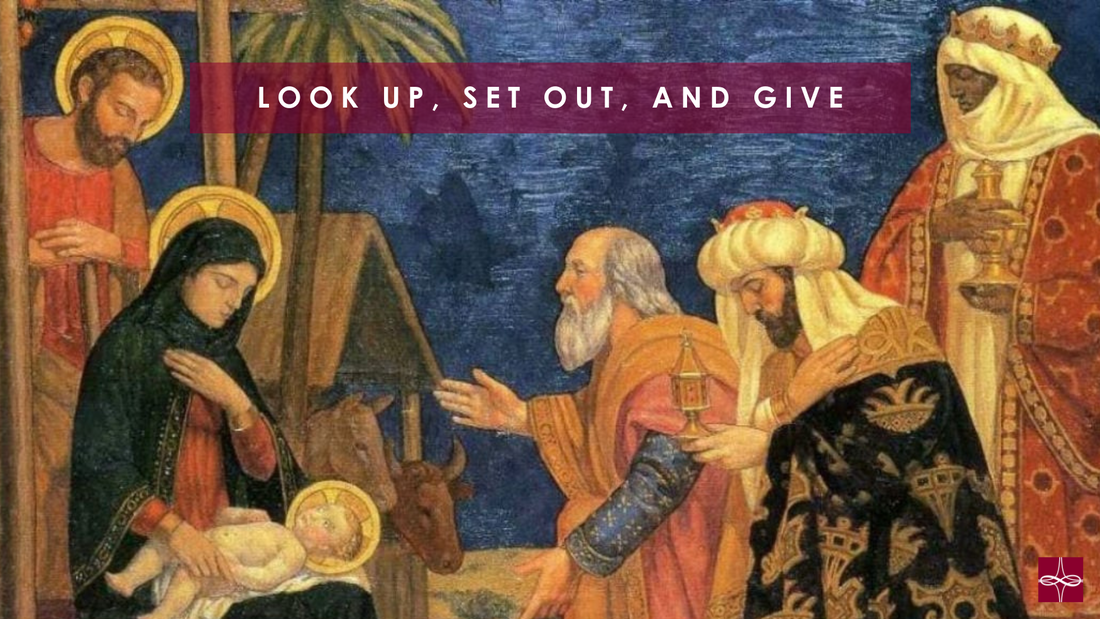
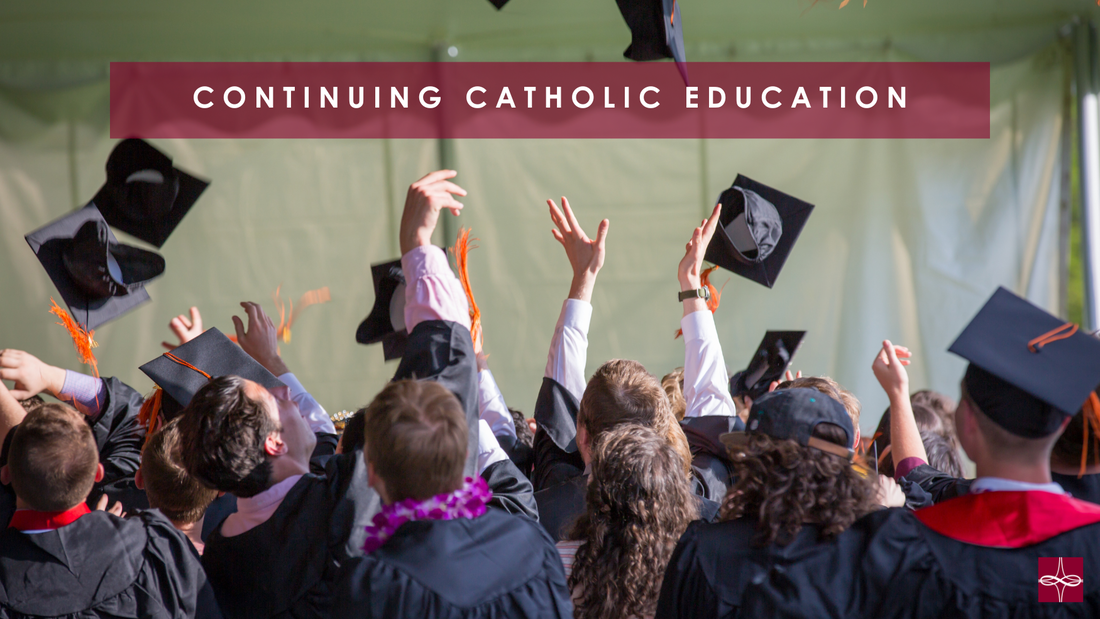
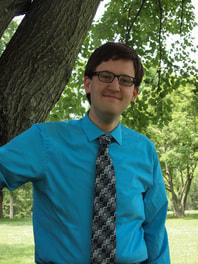
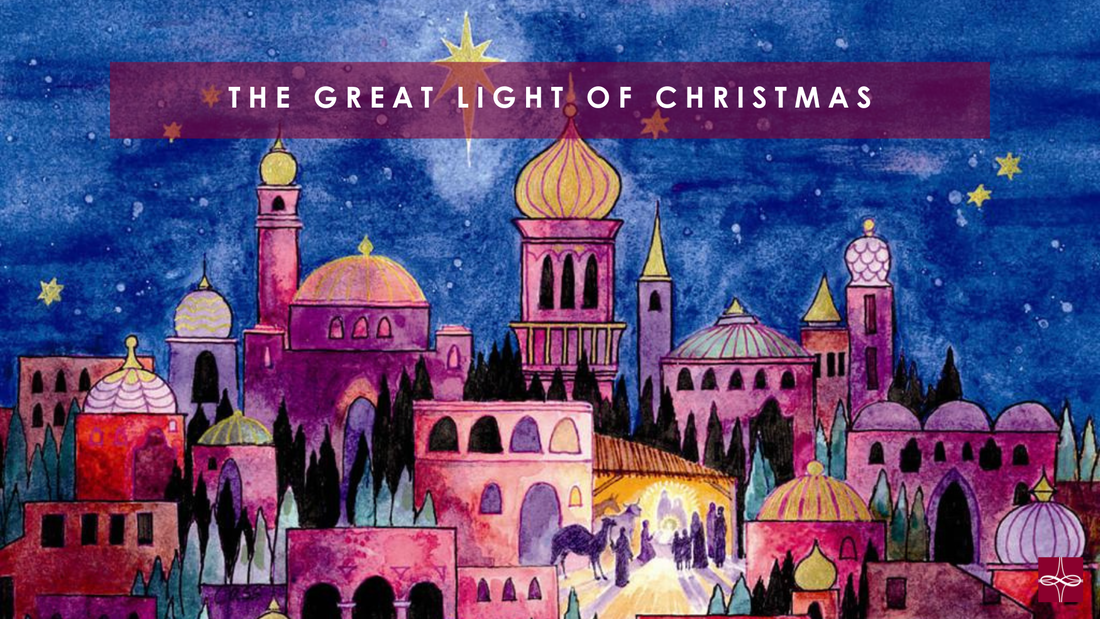
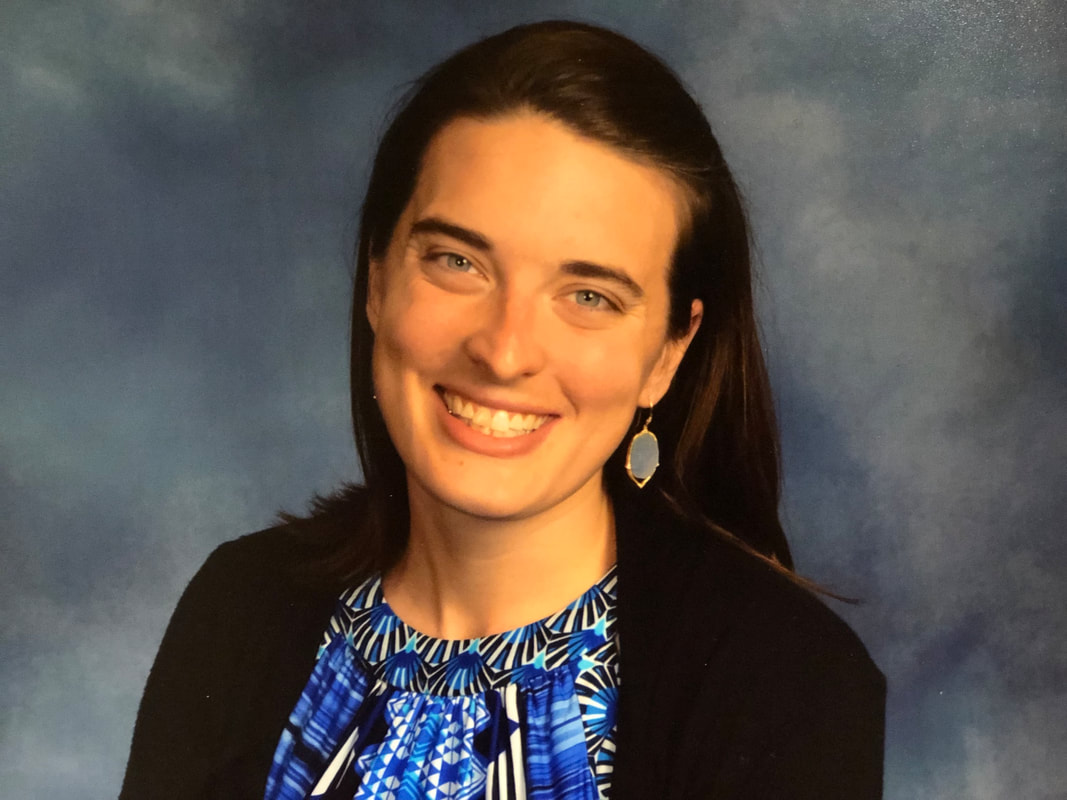
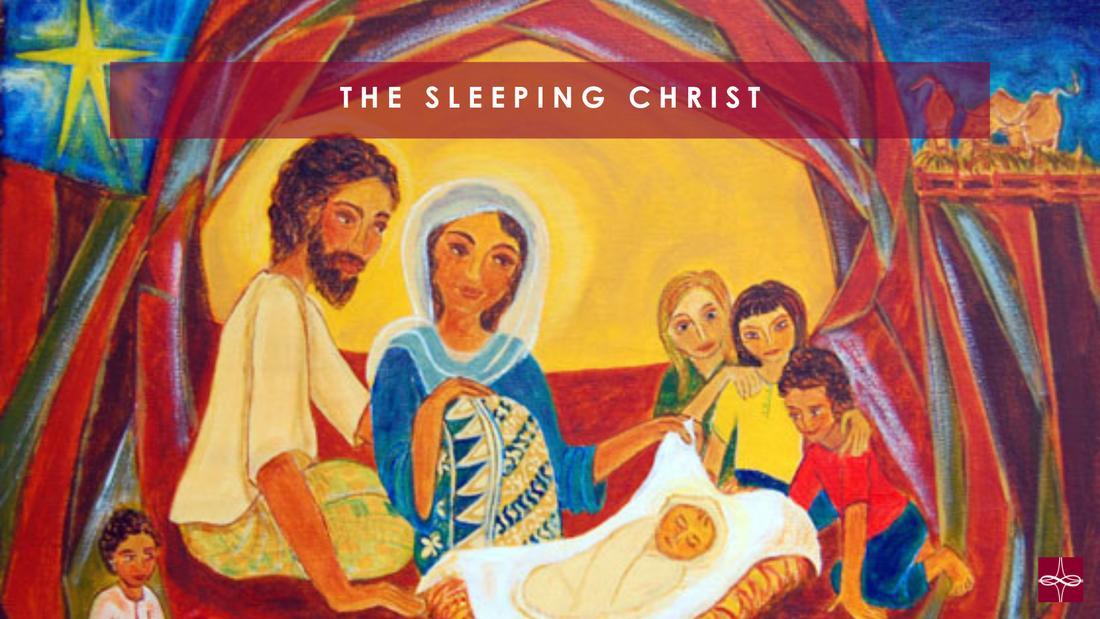

 RSS Feed
RSS Feed